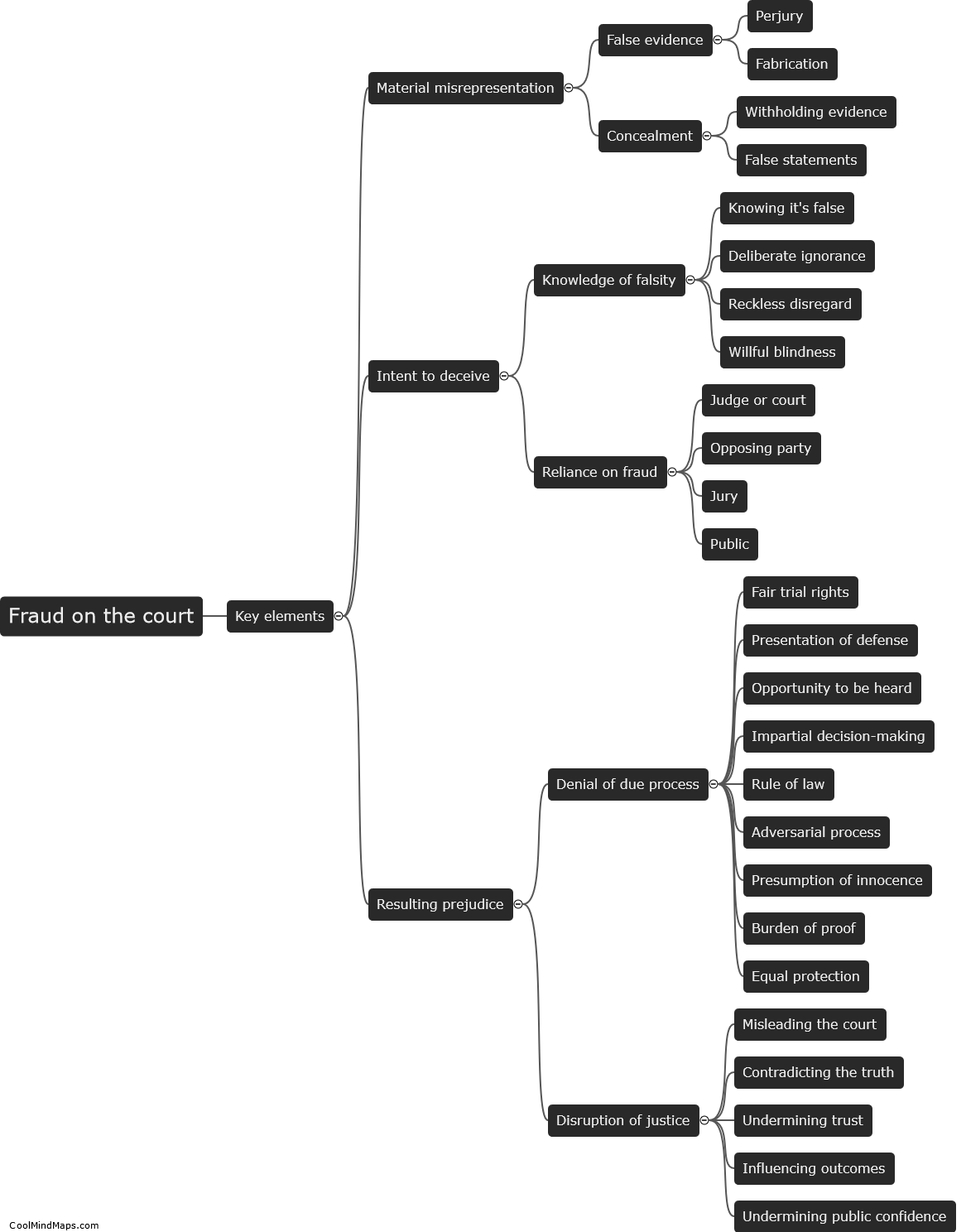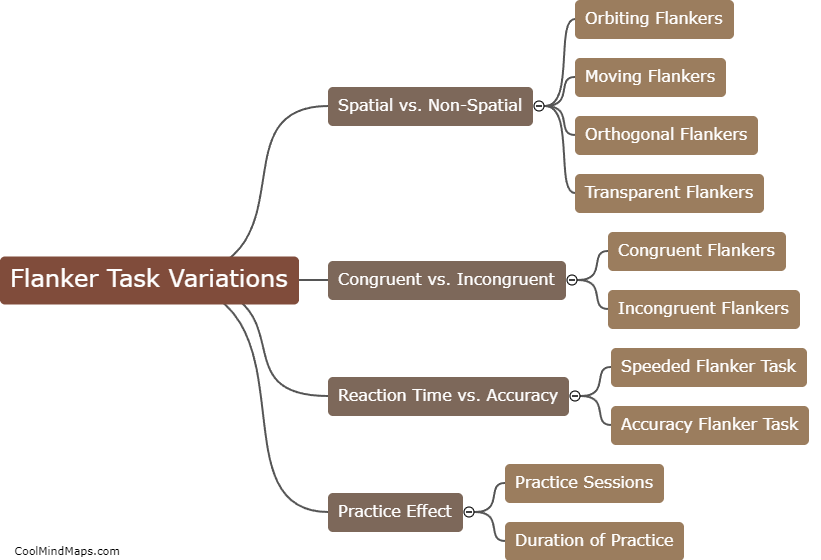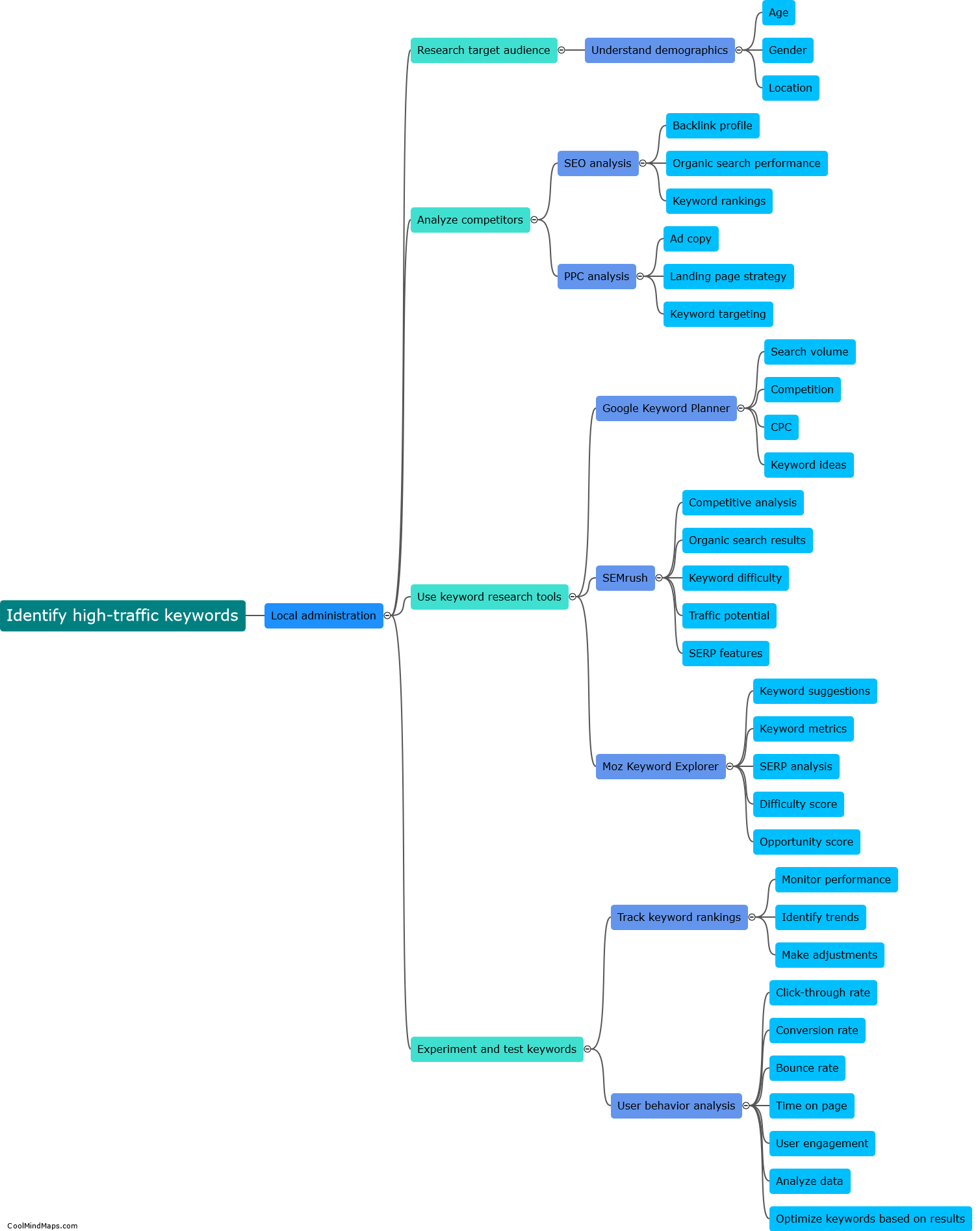What are the key elements in proving fraud on the court?
Proving fraud in the court requires the presentation of key elements that are crucial to establish a case. The first essential element is demonstrating that a false representation or statement was made with the intention of deceiving the court. This involves showing that there was an intent to mislead or defraud the court by providing false information or concealing material facts. Second, it is necessary to establish that the false representation was material, meaning it had a significant impact on the court's decision-making process. Additionally, there must be evidence of actual reliance on the false representation, meaning that the court was influenced or affected by the fraudulent conduct. Lastly, the party claiming fraud must demonstrate that they suffered damages or harm as a result of the fraud. These key elements collectively form the basis for proving fraud on the court.

This mind map was published on 22 December 2023 and has been viewed 85 times.











